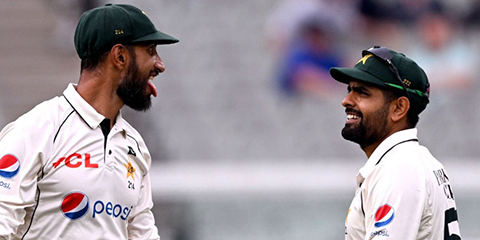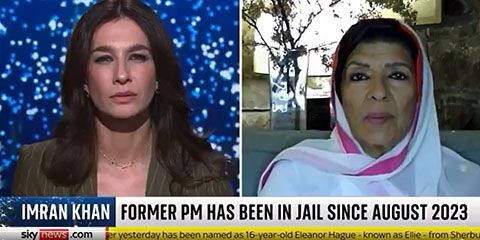The struggles of Pakistan cricket: A system in disarray
JournalismPakistan.com | Published 10 months ago | Dr. Nauman Niaz (TI)
Join our WhatsApp channel
ISLAMABAD—Pakistan's Test cricket has been peculiarly melancholy since its resounding victory over South Africa in 2021. It is a story of squandered promise, ill-conceived experiments, and implacable tumult within the corridors of power. Cricket in Pakistan, often described as a microcosm of its broader societal complexities, illustrates the paradoxes of a country struggling with economy, inflation, political polarization, continuity, and chaos. In the context of Test cricket, here we’ll try to provide insights into the ensuing decline.
Since their reverberating 2-0 victory over South Africa in Pakistan in February 2021, the journey of Pakistan’s Test cricket has unfurled as a template of inconsistency, disillusionment, and, at times, ignominy. To the discerning eye, it is a poignant reflection of the nation itself, an enigmatic landscape of promise juxtaposed with chaos, brilliance tarnished by squandered opportunity, and a cyclical battle between continuity and upheaval. Cricket in Pakistan often mirrors the socio-political realities of a nation beset by economic fragility, inflationary woes, and political discord. The narrative of its Test cricket since 2021 is no less a tale of paradoxes, a study of the fragility of potential and the weight of structural inadequacies.
Inferring From Evidence
In 2021, after vanquishing South Africa 2-0, the team extended its dominance with a 2-0 triumph in Zimbabwe and a hard-fought 1-1 draw in the West Indies. Yet, the sheen of these victories began to wane. The home series against Australia in 2022 ended in a 1-0 defeat, and a subsequent 1-1 draw in Sri Lanka could only offer fleeting solace. The year reached its nadir as Pakistan suffered the ignominy of a 3-0 whitewash at the hands of England at home, a debacle that exposed vulnerabilities both in strategy and execution.
By January 2023, the decline continued with a drab 0-0 stalemate against New Zealand in Pakistan, followed by a 1-1 draw in Sri Lanka and a humbling 2-0 defeat in Australia. What followed was perhaps the nadir: a chastening 2-0 series loss to Bangladesh in March 2024. Redemption arrived briefly with a 2-1 home victory against England later that year, though the triumph was marred by the embarrassment of conceding 823 runs in a single innings in Multan. Under Aaqib Javed’s stewardship, spinners Noman Ali and Sajid Khan were reintroduced to exploit square-turning pitches in Rawalpindi and Multan, tactics that proved instrumental in clinching Pakistan's first home series victory since 2021. Yet, the team’s miseries persisted, with defeats in both Tests in South Africa and a modest 1-1 draw against the West Indies.
Crunching The Numbers
The broader statistics render a sobering picture. Since February 2021, Pakistan has played 30 Tests, winning 9, losing 11, and drawing 6—a middling record underscored by glaring inconsistencies. Over this period, Pakistan employed 35 players, a number that compares curiously with the selections of other leading cricketing nations: England fielded 43 players across 49 matches, India 37 in 39, Australia 25 in 37, and New Zealand 28 in 32. Even Zimbabwe (35 players in eight matches) and Afghanistan (27 in five) reflect a similarly scattered approach.
Pakistan’s reliance on 15 fast bowlers and 12 spinners during this period reveals another layer of imbalance. The quicks picked 237 wickets, while the spinners had 238, yet neither displayed sustained impact other than in the last four home Tests on excessively spinning pitches. Pakistan’s inability to finish innings efficiently remains enigmatic. Against the last three wickets of opposing teams, Pakistan’s bowlers conceded a staggering 2,351 runs across 30 Tests, an albatross that repeatedly dragged them into an abyss.
To break this down further: Pakistan leaked runs at alarming averages across the batting order—2290 runs at 40.89 for the first wicket, 1585 runs at 28.81 for the second, 2031 runs at 39.05 for the third, and an unrelenting 2127 runs at 41.70 for the fourth. These averages persisted even through the middle order and tail: 2078 runs at 41.56 for the fifth wicket, 1779 runs at 37.06 for the sixth, and 1572 runs at 32.75 for the seventh. But it is in the closing stages of innings where their inadequacies were most glaring. For the eighth, ninth, and tenth wickets, Pakistan conceded 901, 692, and 758 runs at averages of 19.95, 15.72, and 18.95, respectively.
The Collapse of Continuity
At the heart of Pakistan’s struggles lies a massive resistance to continuity. Selectors have been unceremoniously replaced, captains sacked with impunity, and team compositions altered with the freneticism of an artist endlessly revising a masterpiece that never materializes. The sacking of Babar Azam as captain, an individual who had become the linchpin of Pakistan's batting, speaks volumes of the contradictions inherent in Pakistan’s cricketing ethos. His replacement, Shan Masood, a man from a blue-blooded background but patchy Test credentials, was illustrative of decisions rooted less in foresight and more in reactive caprice.
The Way Forward
If Pakistan is to reclaim its place among Test cricket’s top teams, it must adhere to reorientation. This begins with implementing continuity: selectors, captains, and players must be afforded the time to grow into their roles. It requires a commitment to nurturing a cricketing culture that values discipline and resilience as much as flair and ingenuity. Above all, it demands introspection, a willingness to confront the uncomfortable truths about the systemic flaws that have engendered this decline.
Pakistan cricket, like the nation it represents, thrives in adversity. The potential for a renaissance exists, but it will require not only technical and tactical adjustments but a profound shift in cricketing approach. Only then can Pakistan’s Test team outdo its recent travails and rediscover the glory that lies dormant within its storied past. For that, all the stakeholders would have to be intellectually honest. For now, apathy, inherent insecurities, and incompetence prevail.
Dr. Nauman Niaz is the Sports Editor at JournalismPakistan.com. He is a civil award winner (Tamagha-i-Imtiaz) in Sports Broadcasting and Journalism and a regular cricket correspondent, covering 54 tours and three ICC World Cups. He has written over 3500 articles, authored 14 books, and is the official historian of Pakistan cricket (Fluctuating Fortunes IV Volumes – 2005). His signature show, Game On Hai, has received the highest ratings and acclaim.

























